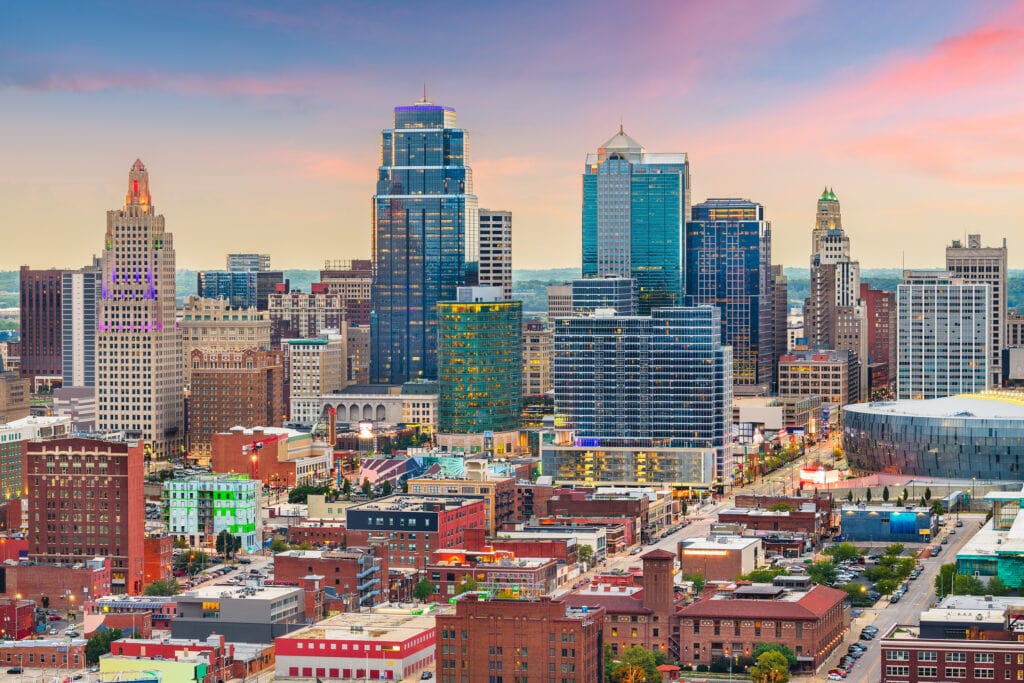How to Attract Megaprojects: Become a Megasite

As industrial development in the United States continues at a lightning pace, it’s essential for communities throughout North America to enhance their megasite offerings in order to meet demand. Kansas City provides an example.
In this transformational era for industrial development, North American project activity is booming across industries and regions. Major legislative moves, including the Inflation Reduction Act and the CHIPS Act, have resulted in a 20-year high for U.S. manufacturing construction (and steep competition for incentive funding). The United States is currently attracting 23% of all foreign direct investment across the globe, with growing opportunities for reshoring and nearshoring.
According to the U.S. Census Bureau, reshoring activity largely accounts for more than $195 billion in annualized construction spending in 2023. This is up 79.9% year-over-year and is well above the decade average of $60 billion in annual spending.
Megasites Support Megaprojects
The spotlight is undoubtedly on megaprojects—endeavors that involve north of $1 billion in investment and have significant labor, utility, and transportation infrastructure requirements—and the megasites available to sustain them.
Defining Megasites
Megasites, roughly defined in this context as areas larger than 1,000 acres that are available for industrial-scale development, are in short supply, and sites that meet both utility and transportation infrastructure demand requirements and are controlled by a single-ownership entity are even more limited.
From an economic development perspective within the Kansas City market, we’ve seen these factors play a significant role in the attraction of megaproject deals. With a shortage of viable options available across North America—states, communities, and developers are looking to create a competitive edge that will attract these large-scale projects.
The market surrounding a megasite plays a critical role in that property’s ability to attract significant investment. A business-friendly operating environment, impactful incentive tools, and access to a major population center with a proven skilled workforce pipeline are top drivers in the site selection process.
A recent example is Panasonic’s decision to locate its $4-billion battery manufacturing plant at Astra Enterprise Park in De Soto, Kansas, capitalizing on the site’s location within the Kansas City metro to support the facility’s anticipated 4,000 jobs.
Megasites Provide Connectivity
Megasites are more than just expansive areas of land; they must serve as a nexus of connectivity. The Kansas City region’s central location and access to road, rail, river, and air cargo transport provide companies with strategic access to the epicenter of the North American transportation network and the ability to ship to 90% of the continental U.S. population in two days or less.
Access to multiple modes of transportation ensures unhindered movement of resources and products across North America and beyond, expanding reach and offering risk reduction, resilience, and flexibility.
Speed-to-market is a critical factor for most companies looking to build a new plant. Sites with robust utility infrastructure in place—particularly those with access to clean/renewable energy—reduce project timelines and price tags.
Additionally, locations that proactively secure flexible zoning approval and expedited permitting provide prospects more certainty on the front end and reduce potential obstacles post-site selection as they move forward with the build process. Hunt Midwest’s 3,300-acre KCI 29 Logistics Park within the Kansas City region is garnering a significant amount of attention from megaproject opportunities for its pre-approved zoning and permitting entitlements for manufacturing, distribution, ecommerce, office and technology uses, and more.
Companies can access additional cost- and time-saving benefits in megasites that are approved to be a Foreign Trade Zone (FTZ). An FTZ is a designated area that operates outside of Customs territory for purposes of collection of Customs duties and fees until the product enters U.S. commerce or is exported. Kansas City’s FTZ includes zones in both Kansas and Missouri and is one of the largest in the United States.
As industrial development continues at a lightning pace, it’s essential for communities throughout North America to enhance their megasite offerings in order to meet demand. The areas that provide speed, strategic assets, cost savings, and strong partnerships will rise to the top and will continue to win these transformational mega investments.
About the author: Elli Bowen is vice president at KC SmartPort, the region’s industrial business attraction organization and an affiliate of the Kansas City Area Development Council. She has been actively involved in the attraction of projects to the Kansas City region accounting for $6.5 billion in capital investment, 13,167 new jobs, $615.5M in new payroll and 24.5 million square feet of space. A few projects of note include Panasonic’s $4B investment in an electric vehicle battery manufacturing plant, Chewy Inc.’s $143-million, 1,600-job fulfillment center, and most recently, a 1.5-million-square-foot distribution center for ACE Hardware.
More on site selection here: How to Make a Site Selection Slam Dunk

